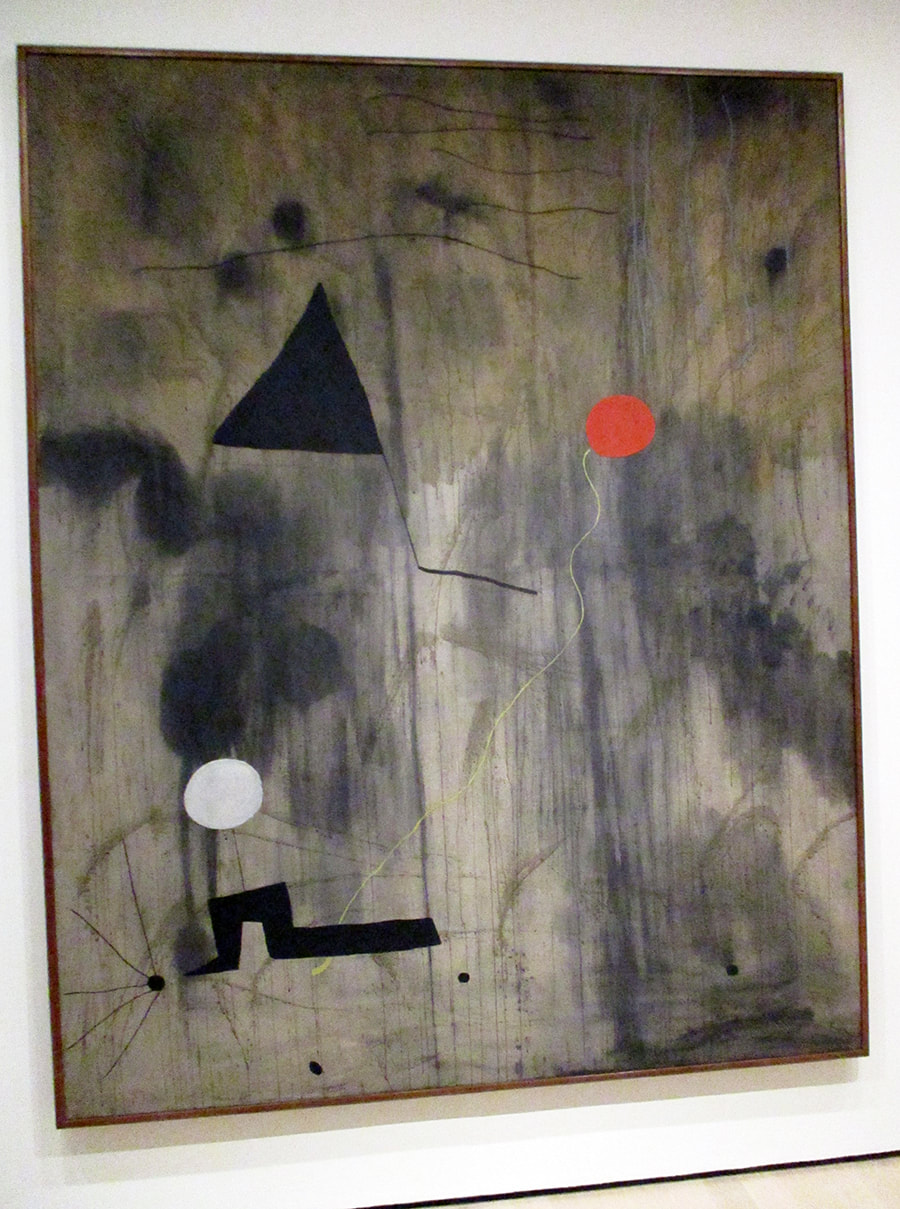"Joan Miro: Birth of the World" “Joan Miro: Birth of the World” at the Museum of Modern Art in New York City, presents 60 works by Miro drawn from MOMA's extensive collection of Miros as well as from other collections. The exhibition highlights Miro's surrealistic masterpiece the “Birth of the World” but surveys Miro's art during the course of the period 1920 to the early 1950s, a period that encompassed a number of changes of style.
Miro was born in 1893 in Barcelona. His family was middle class and lived in a good section of the city. Growing up, Miro studied both business and art. His business studies led him to become an apprentice clerk while a teenager but a nervous breakdown ended his business career. His early art work was influenced by traditional Catalan art. However, after seeing exhibitions in Barcelona, his style changed reflecting the influence of Van Gogh, Cezanne and the Fauvists. His work found some recognition and he had his first solo exhibition in Barcelona in 1918. In 1920, Miro made his first visit to Paris. While there, he met Picasso but more importantly, he came into contact with a number of avant garde poets. The latter had a strong influence on Miro and he changed his style, employing ideas in his visual art that were inspired by their poetry. Returning each year to Paris, Miro exhibited with the Surrealists and participated in Dada activities. The Spanish Civil War bought an end to Miro's pattern of living in Paris during the winter and returning to the family summer home during the summer. At the outbreak of World War II, he moved his family first to Normandy and then when the Nazis invaded France to Palma de Mallorca. He died there in 1983. Miro resists being pigeon-holed. For example, he was greatly influenced by the Surrealists and exhibited in major Surrealist exhibitions but he did not regard himself as a Surrealist. In an interview in 1958, he pointed out that he never signed any of the Surrealist manifestos. Rather, they were proceeding along parallel tracks. Their influence came not from the visual art but from the Surrealist poetry, which Miro said inspired him to “do away with pictorial reality.” Along the same lines, Miro objected to being called an abstract artist. The figures and scenes depicted in his works are often distorted and almost unrecognizable but he rarely ventured into complete abstraction. Miro also did not view himself as a political artist. His works, however, do include Catalan symbols. Furthermore, as the Spanish Civil War progressed during the 1930s, his works reflected the agonies and emotions of the times One tends to think of Miro as using a limted pallet of muted colors. However, as the exhibition demonstrates, he could also use bold, almost psychedelic colors such as in "Still Life with an Old Shoe". Many artists limit themselves to a single medium. However, as the MOMA exhibition shows, Miro's works include works on paper, prints, illustrated books, collages, objects, and ceramics as well as paintings. These were often done using unconventional materials such as found objects. Moreover, Miro embraced unconventional techniques such as drip painting long before it came into popular use. This exhibition documents the scope of Miro's art. It takes us from the game-changing visit to Paris up to the time when Miro had established an international reputation with all the changes in between. Not all the works are visually attractive in the conventional sense. However, they are thought-provoking and often with emotional appeal. The display of the works is supported by good signage often including quotations from the artist. |
"Birth of the World" by Joan Miro.
"Still Life With An Old Shoe" by Joan Miro.
|
Art review - Museum of Modern Art - “Bruce Nauman: Disappearing Acts”


